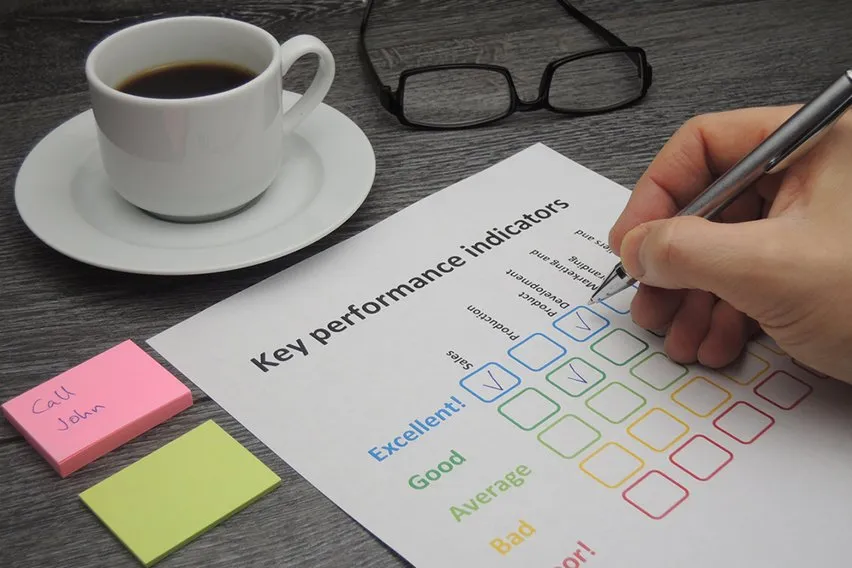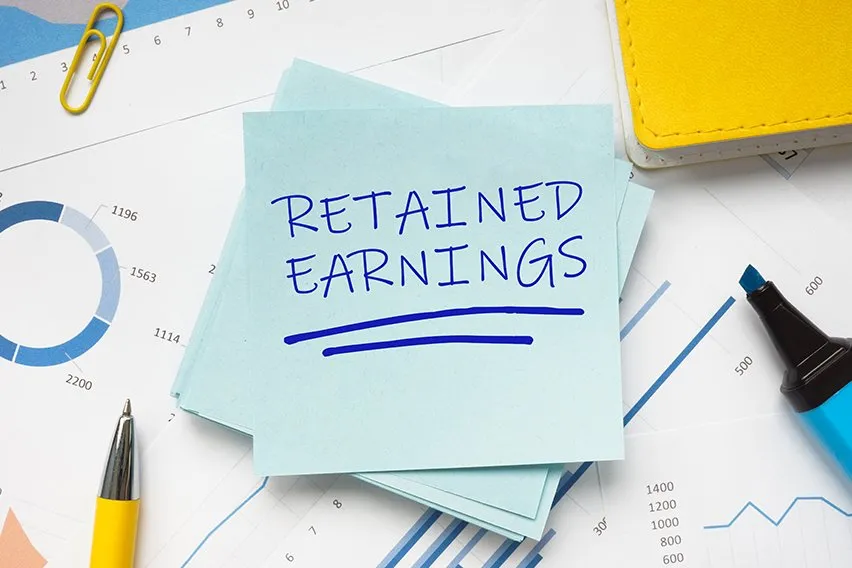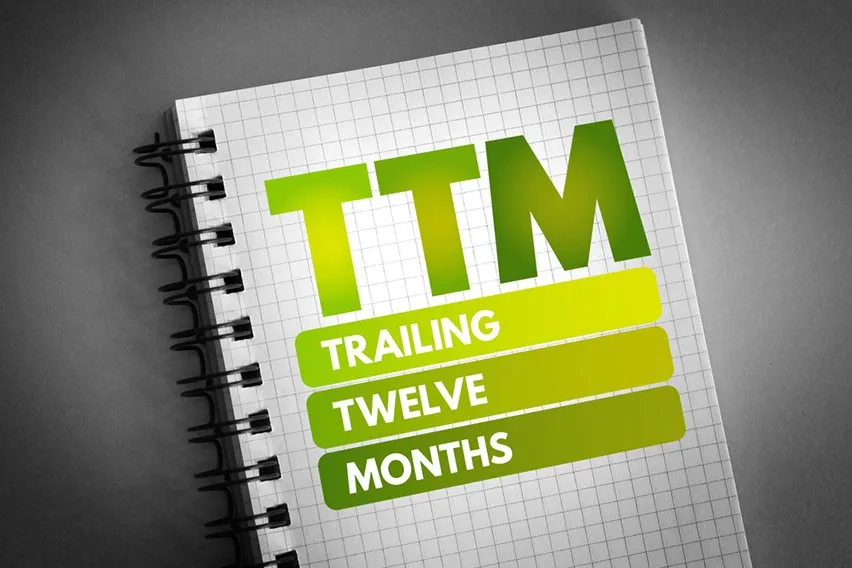13 Important Sales KPIs Every Team Should Measure

When it comes to progress, you’ll find that most of it is data-driven. Being able to observe and measure certain aspects of a subject leads to success. This is true in every aspect of life, including business. However, many business leaders have a hard time determining what should be measured. How should progress be tracked? What aspects of my performance are leading to success?
In business, we have key performance indicators to tell us what is working, and what needs improvement. The average business model depends on sales performance for success. As such, there are a number of different key performance indicators for sales activities.
If you’re looking to improve your sales team, keep reading. In this article we’re going to be covering the 13 most important sales KPIs that you should be measuring!
Here’s What We’ll Cover:
What Are Key Performance Indicators?
Why Are KPIs Necessary for Sales?
The 13 Most Important Sales KPIs
What Are Key Performance Indicators?
Key performance indicators, or KPIs for short, are business metrics. They are the way that a business tracks performance. Performance can be tracked in a number of different ways, and KPIs can apply to many different levels of business.
For example, KPIs can be tracked against a business’s overall goals. Company goals are an important part of KPIs. In fact, all KPIs are based on overall business goals. KPIs can also be tracked against departments, or individual representatives. The goals that the KPIs are being measured against will be based on the business goals. However, they’ll be specific to the department or the individual being measured.
This article aims to go over specific KPIs, though. All of the KPIs listed below are going to be related to the sales department. They may be for the entire department, a specific sales team, or individual sales reps. Every business has a sales goal. Specific goals can be set for the sales team, making KPIs more meaningful, as well.

Why Are KPIs Necessary for Sales?
KPIs for sales are necessary in most businesses. Sales are what drive a business’s success. Nearly all firms have a revenue goal. By measuring sales team performance, a business can increase their chances of success. To measure performance, both goals and KPIs have to be set, though.
It’s important to keep in mind that KPIs and goals have to be relevant to your business, and the industry you participate in. If your goals aren’t related to your business, then they won’t make an impact on performance. The same can be said of KPIs. You wouldn’t want to measure your marketing team based on average deal size. The two don’t correlate. Marketing has nothing to do with the deal size that a sales team makes.
The 13 Most Important Sales KPIs
There are numerous different KPIs that have to do with sales. Most of them can be broken down by who they should be assigned to. As such, we’re breaking our sections down further below. This will make it easier for you to determine if you’re tracking the right KPIs for the right people! Check out the 13 most important sales KPIs that you can use below.
4 General Sales KPIs
While KPIs can be highly specific, there are a number of KPIs that should be standard across the board. When you’re looking at your company’s sales goals, you have to have a baseline. These general KPIs are an excellent place to start. They’ll help you get things going, before assigning specific KPIs to managers or reps.
1. Monthly Sales Growth
When you’re determining your sales KPIs, it’s important to know your monthly sales. Reviewing sales on a monthly basis shows you how sales increase and decrease over time. As you gather this data, you gain an understanding of what to expect. Then, realistic goals can be set.
Without sales expectations, sales managers and reps won’t have any way to measure success. For managers, it makes it difficult to make sales decisions. They cannot implement any strategies without a baseline of data. For reps, it ruins engagement. When you have no ceiling to reach for, one of two things happens as a rep. You either overwork or underwork. Overworking causes burnout, while underworking results in lower average revenue. Both can be catastrophic for a business.
2. Average Profit Margin
When it comes to products, most have different profit margins. Measuring the profit margins of products over time helps a team determine what products should be focused on. Products that yield a higher profit should be given more of an effort to sell. Other products should be pushed as a second option when possible.
For businesses that sell a diverse set of products, this is very important. Sales drive profits. If some products are going to result in higher profits, then sales reps should be intent on selling them. This can also be relayed to other departments, so that the effort is business wide.
3. Average Cost Per Customer Acquisition
This is one of the most important metrics available. Customer acquisition costs refer to all costs related to signing up a customer. Customer costs can vary depending on the line of business you are in.
For example, an ecommerce business would determine this by totaling all of their online marketing costs over a period of time. They would then divide that by the number of customers they acquired over the same time period. Ideally, the cost per customer would be less than the money made from sales.
When it comes to service-related businesses, the variables start to add up quickly. You have to consider all marketing materials, as well as the time spent on each acquisition. Understanding how much it costs to acquire new customers tells a business how much they have to charge for products. If customers aren’t spending more than what it takes to acquire them, your business will suffer losses.
4. Customer Lifetime Value
How much do you expect to make off of each customer you serve? Additionally, how long do you expect to serve your customers? Understanding the relationship between customer acquisition costs and customer lifetime value is important.
If you plan on serving customers once, then you have to make more than the acquisition cost in a single sale. However, if the relationship is going to be ongoing, then you can afford to make less money initially. To truly understand this, you have to measure how long customer relationships last. Depending on the business you’re running, this can be measured in a number of ways. You can track the sales made to the customer, and the dates that they occur on. You can also review the correspondence with your customers.
5 KPIs for Sales Managers
Sales managers should have KPIs, just like the rest of the sales department. These KPIs are going to be based around their jobs entirely. It’s important to remember that not all sales managers have the same responsibilities. Be sure to assign these KPIs to them on an individual basis accordingly.
1. Sales Volume
Sales volume is an essential KPI for any sales manager. Most businesses have two presences in today’s marketplace. They exist both in-person and online. When you compare sales volumes across all of your locations, you start to paint a bigger picture. You can begin to see where your products are in demand, and where they aren’t doing well. This leads to a greater understanding of your business’s sales, and you can begin to figure out why performance is up or down.
Additionally, sales volume KPIs can help you focus your sales effort appropriately. For example, if a product does particularly well at one store but not another, you can make new sales strategies. At the store where volume is up, you can further increase the volume by targeting that product. Then, you can use the information from that location and use it elsewhere.
Being able to review volume and drive sales is key to seeing higher rates of success. You can also start to use this data in correlation with other data, like customer volume at locations.
2. Pricing
Sales managers need to be aware of pricing at any given time for their business. This includes internal pricing, as well as competitor pricing. Monitoring pricing in relation to performance can help in creating a competitive strategy.
Internally, monitoring pricing in relation to volume can tell you what price works. Finding the right average sales price is important. Being able to cover all production costs and make a profit is essential. Additionally, knowing what your competitors are pricing similar products at can give you an edge. Pricing strategies are a great way to stay viable in any market.
3. Average Sales Cycle Length
The longer it takes to close a sale, the longer it takes to see money. Measuring the average sales cycle duration is an excellent KPI to keep track of. Sales cycles should be measured from initial engagement to a closed deal. Closed sales are the only way that a company can make money, after all.
When reviewing sales cycles, it’s important to take a few variables into consideration. Sales rep experience is something to be aware of. A veteran sales rep shouldn’t be your example, in most cases. They’re going to have the experience to close sales at a faster pace than new employees. Rather, you should average out the time it takes all of your sales reps to close a deal. Once you have an average number, you can focus on what certain reps are doing better than others.
If you can improve the efficiency of your entire sales team, you’ll be able to generate more revenue. Closed sales mean more money, and being able to improve the rate at which sales close is a game changer.
4. Close Ratio
In addition to measuring the time it takes to close a sale, the ratio of closed sales should be observed. The close ratio measures how efficient a rep is at closing sales based on the leads they’ve worked. This is similar to measuring touches on clients or projects. The fewer number of touches, the more efficient a rep is.
To calculate close ratio, you can divide the number of closed deals by the number of leads worked. There may be some discrepancy when it comes to leads, though. To make things fair, only qualified leads should be calculated. This means that the leads all follow the same format, or come from the same place. This can be broken down further, though. By categorizing how leads were generated, you can see which reps excel in certain areas. This shouldn’t be done right off the bat, though. Start with the big picture, then move towards a more granular approach. Too many details may obscure the image, after all.
5. Employee Satisfaction
It may seem like this has less to do with sales and more to do with the workforce. That’s not entirely true, however. Employee engagement is largely dependent upon satisfaction. If employees aren’t satisfied, then they aren’t going to be in tune with their work. How does this affect sales, you might ask. It’s simple. If your sales reps aren’t engaged, then you won’t make as many sales as you could.
When you keep your employees happy, you get better performance from them. This is true across all departments. Therefore, a more satisfied sales department will translate to higher average revenue. The sales process is a large part of any business. For it to work at peak efficiency, your reps have to be happy.
How is this a KPI, though? Excellent question. To measure employee satisfaction, you must gather employee feedback. This means engaging with them, of course. Asking them to provide feedback about your performance is a huge task to accomplish. However, if you neglect this process, you’ll see engagement plummet. Overall, this means worse sales performance for your company.

4 KPIs for Sales Reps
After the overall sales goals and KPIs have been determined, KPIs for sales reps can be considered. These are going to be granular in nature, and will deal with the sales pipeline, or the sales funnel. Understanding the actions being taken by sales reps, and how to improve them, can generate more sales. It can also increase the speed at which sales occur. These are the best KPIs for sales reps specifically.
1. Action or Activity Per Rep
The sales department is all about action. If things aren’t being done, then sales aren’t being made. There are a number of different actions or activities that can be measured for sales reps. Each one has a different weight to it, in most cases. Regardless, all of them contribute to the sales process. Some of the actions or activities that can be measured are as follows:
- Number of calls placed
- Number of emails exchanged
- Number of meetings scheduled
All of these actions are about turning a potential customer into a paying customer. Each one plays a part in the entire sales process, and generates revenue.
When reviewing these actions, some things need to be taken into consideration. Some reps are going to have to spend more time on customers. This can be due to the customer or the rep themselves. Often, quantity and quality need to be measured side by side. Then, the figures can be compared with how often the rep closes a deal. Doing so helps paint a more accurate picture.
2. Opportunity Creation
In sales, opportunity is a key function. If sales opportunities don’t exist, then sales don’t, either. Opportunity creation is also referred to as cold calling from time to time. Many sales reps focus their time and energy on creating opportunities by reaching out to new potential customers. When they receive a response, it means that an opportunity has been created.
To determine how often a rep achieves a sales opportunity, a few things can be documented. First, all forms of communication can be documented. This overlaps with rep activity KPIs. However, it has to be taken a step further. An opportunity ratio has to be created. This can be done by dividing the number of responses by the number of attempts.
It can be assumed that an opportunity ratio will be low. Thanks to telemarketing, cold calling has been given a bad name. Even when a business provides a great opportunity, some people prefer not to be bothered. Be realistic when setting these goals.
3. Average Response Time
The number of actions taken means nothing if your reps aren’t responding. Alongside monitoring the number of calls and emails, response time has to be reviewed. Many sales are lost because the potential customer wasn’t taken care of in a timely manner.
Generally speaking, the faster a customer is responded to, the more likely a rep is to make a sale. This means that a hierarchy of responsibility has to be created. This is something to take into consideration when setting goals and creating KPIs. Sales reps have a number of different responsibilities that need to be prioritized. How quickly are your reps responding? Are they slower because they are tending to other matters?
Average response time has to be set in a realistic manner. The method of communication drives this. Typically, emails are the slowest form of communication. Phone calls tend to take priority over them. If your business implements an online chat service, this may supersede phone calls. Messaging via chat has an expectation of instantaneous response.
4. System Touches
No matter what your business does, you’re using technology in some way. The amount of touches that an account takes to resolve relates to how efficient your reps are. Sales reps should be touching accounts at an acceptable rate. If an account has more touches than average, it means that it is taking longer to close a sale. By reducing the number of touches per account, you increase efficiency as well as sales.
Key Takeaways
Sales performance is the lifeblood of any business. If a business is having trouble making sales, it means that they’re having trouble making money. Thankfully, there are plenty of ways to measure sales performance. By implementing meaningful key performance indicators, the sales process can be refined. As the process is refined, you’ll likely see sales improve. If you’re looking to improve your company’s sales, using the KPIs listed here is a good place to start.
Are you looking for more articles like this? Head over to our resource hub! We have articles for sales leaders, industry enthusiasts, and business owners. Be sure to check it out today!
RELATED ARTICLES

 What Is Off-Balance Sheet Financing? Definition & Example
What Is Off-Balance Sheet Financing? Definition & Example What Is Demand-Pull Inflation? Definition & Examples
What Is Demand-Pull Inflation? Definition & Examples What Are Retained Earnings? Definition, Examples & Calculation
What Are Retained Earnings? Definition, Examples & Calculation Cost Method: An Accounting Guide
Cost Method: An Accounting Guide What Is TTM (Trailing Twelve Months) in Finance?
What Is TTM (Trailing Twelve Months) in Finance? Cost Pull Inflation: Definition, Examples & Causes
Cost Pull Inflation: Definition, Examples & Causes